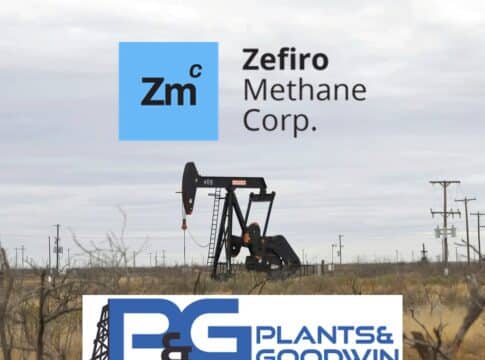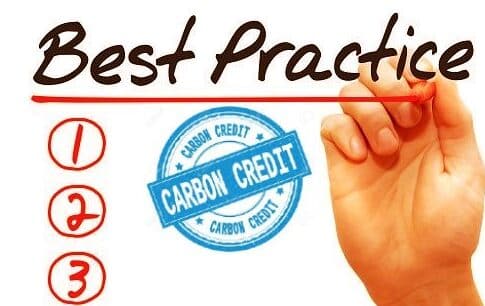Methane Offsets Originator, Zefiro, Buys Plants and Goodwin
Zefiro Methane Corporation, a private methane offsets originator, acquired a majority ownership stake in Plants & Goodwin (P&G), an oil well plugging company.
Led by executives from the former carbon market team at J.P. Morgan, Zefiro seeks to reduce methane emissions by plugging orphaned and abandoned oil and gas wells. This then enables the company to produce methane emission offsets, also known as carbon offset credits.
P&G is a Pennsylvania-based provider of services to plug orphaned oil and gas wells for over 50 years.
Methane Emissions from Abandoned Wells
Methane (CH4) is the second most abundant greenhouse gas (GHG) after carbon dioxide that’s responsible for about 20% of global emissions. This gas is at least 25x to over 80x more potent as CO2 at trapping heat in the atmosphere.
Methane concentrations in the air have increased alarmingly since 2007. Scientists said that this rising CH4 emissions may be the biggest threat to keep global temperatures below 1.5C.
Recently, a NASA satellite revealed that Turkmenistan is one of the worst methane ‘super-emitters’ in the world.
The increasing methane pollution is largely because of human-related activities. And one such activity is abandoning oil and gas wells that are causing serious problems to the U.S.
According to recent estimates, there are more than 4 million orphaned oil and gas wells in the U.S., spreading out across 26 states. Here’s the percentage share of orphaned oil and gas wells in Canada and the US, according to a study published in the American Chemical Society.
These abandoned, unplugged wells spew out methane that can greatly pollute the air that people breathe. The leaking methane is equal to burning over 16 million barrels of oil, per government estimates.
As such, the inactive wells pose as one of the country’s most pressing concerns in advancing a sustainable economic growth. In response, the Infrastructure Investment and Jobs Act 2022 specifically set aside almost $5 billion to help states plug abandoned wells. To date, all 26 states have applied for funding.
Zefiro comes to the government’s aid by addressing the methane pollution from unplugged oil and gas wells. Its acquisition of P&G shows that commitment.
In translating that commitment to reality, Zefiro’s Founder & Chairman, Talal Debs, remarked that:
“Zefiro’s strategy is to integrate real (physical process) innovation with new forms of capital, through the ‘environmental’ credit markets; the result will be a new kind of enterprise. By enlisting veteran operators like Plants & Goodwin, we are taking the first big step to making our unique vision a reality.”
Zefiro’s Methane Emission Reductions and Carbon Credits
Acquiring Plants and Goodwin will position Zefiro as the leader in fixing the environmental and health problems left behind by the oil and gas companies that abandoned the wells, allowing them to emit methane for decades.
P&G is a family-owned company that has been plugging wells for more than 5 decades. It is focusing on idle wells in shale and sandstone formations across the Appalachian Basin.
They said that their partnership with Zefiro is “a game-changer for finally bringing about a large-scale, nationwide solution to methane emissions from abandoned wells.”
Luke Plants, assuming the CEO role for P&G, further pointed out that with Zefiro, they’ll be among the first to tackle the problem and be a model for other basins across the U.S.
Zefiro’s methane emission reductions efforts not only align with the industry’s goal of a greener future. The Vancouver-based company is also expanding the supply of carbon credits working as offsets crucial for achieving net zero targets.
The company primarily trades in the voluntary carbon markets, believing that firms that go “above and beyond” mandated emission reductions bring a higher environmental benefit that aligns with their ESG policy.
How Does Zefiro Generate Carbon Credits?
Every project is unique because of the many variables of an abandoned oil well. But Zefiro’s projects generally follow the six major steps below as described in their website.
Project Setup. Zefiro measures pre-plugging emissions and prepares the project document outlining emission baselines, project boundaries and activities.
Engage Third-Party Verifying/Validating Body (VVB). Zefiro enlists a 3rd-party VVB to audit and certify each project, ensuring it meets all criteria for carbon credit issuance. The independent body needs to confirm that the project will indeed achieve the methane emission reductions it claims.
Undertake Well Decommissioning. Zefiro will plug each well, ensuring that no emissions can escape by using advanced technologies and adhering to applicable standards and regulations.
Final Emission Assessment. Once decommissioning is over, Zefiro will do the final assessment to make sure that all project deliverables are met.
Issue Offsets. The applicable standards organization (e.g., Verra, American Carbon Registry, Gold Standard) issues the appropriate number of offsets.
Retire Offsets. Offsets are retired or removed from circulation for GHG reductions claim toward a net zero goal or other use. Retirement happens in accordance with the program’s registry processes. Once retired, offsets are not transferable and can’t be used again for other environmental claims.
Zefiro will roll-out to different states, deploying staff to decommission wells nationwide.
The post Methane Offsets Originator, Zefiro, Buys Plants and Goodwin appeared first on Carbon Credits.



